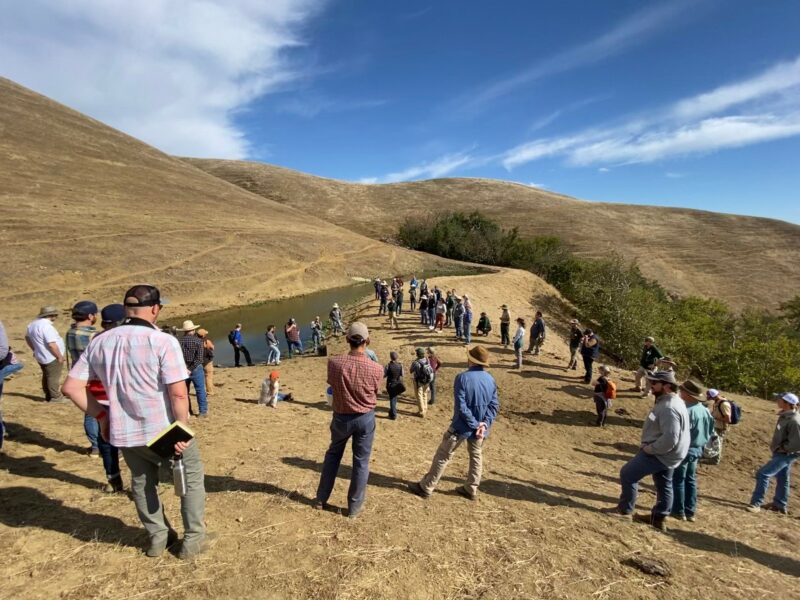Estuary Blueprint
Enhancing the Habitat Value of Stock Ponds: 2022 Workshop
Progress on Estuary Blueprint Task 13-3
Over the last 15 years, livestock pond restoration has become a priority for many ranchers, landowners, and conservation partners in the East Bay. These efforts provide both drinking water for cattle and habitat for native animal species.
Because of the interest in replicating the success of projects, a workshop was held in October 2022 to share the considerations, permitting needs, implementation, costs, and maintenance plans. The Central Coast Rangeland Coalition (CCRC) hosted “The Importance of Livestock Pond Restoration: Maintaining water sources and wildlife habitat in the uplands” in Sunol, CA, attended by approximately 90 people. The focus of the panel discussions, individual presentations, and site visit was the overall process related to costs, permitting, site selection, species needs, and coordination between landowners, livestock producers, and partners. The hope is that sharing this information among agricultural producers and conservation professionals will result in more pond restoration to benefit native animal species throughout the state.

Workshop participants visiting a recently restored pond site. Credit: Alyson Aquino
The Alameda and Contra Costa County NRCS and RCDs continue to support pond restoration through various funding sources, including USDA Farm Bill Programs, such as the Environmental Quality Incentives Program (EQIP). EQIP has funded approximately $400,000 in pond restoration projects in 2023 and another $200,000 is expected to be obligated before the end of the year. Funds are used to remove sediment from ponds, repair damage to dams and spillways, and/or to establish supplemental livestock water to decrease intake from ponds during critical times of year. Creating additional drinking water sources for livestock also results in the secondary benefit of improved grazing distribution throughout the unit. Ranchers have more control over when and where the cattle are utilizing forage, thereby minimizing excess fuels, weeds, and maintaining sufficient cover for soil health and stabilization.